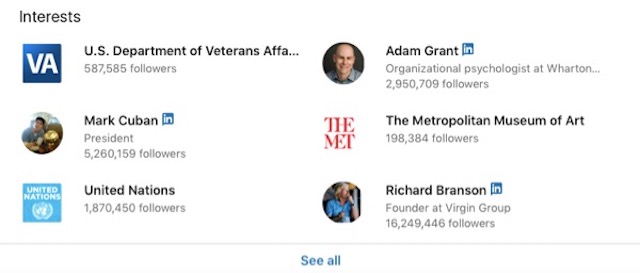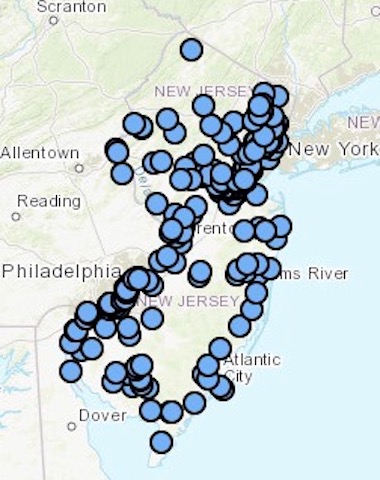We Celebrate A Decade of Truth-Telling
Wolfenotes founded in principle, calling out media cowardice
Today is the 10th anniversary of Wolfenotes.
We’ve posted 2,925 pieces and hundreds of photos over that decade.
Google analytics tells me that 583,057 readers have read 721,969 pages, spending an average of 3 minutes and 11 seconds per page!
Our first post was titled:
That post included excerpts from Sheldon Wolin’s book “Democracy Incorporated: Managed Democracy and the Specter of Inverted Totalitarianism” (excellent review here) and Chris Hedges, two writers whose critiques have been validated and only become more important since.
We reminded readers that I.F. Stone famously said, “all governments lie“.
That post also told the story about how we were “fired” from writing a column at the Newark Star Ledger’s citizen journalism page known as “NJ Voices“. Star Ledger editors invited me to write that column in 2007, with a broad mission with just this caveat:
Wolfe will write about environmental issues: policy, media, and politics. The views expressed here are solely his own.
I began in earnest, writing mostly non-controversial posts that focused on Trenton legislative and regulatory affairs, with occasional landscape photo posts. I was able to transfer the text of those posts from 2007-2009 over to Wolfenotes, but unfortunately NJ.Com deleted all the lovely photos I posted, including the ugly and controversial ones showing chemical plants and toxic waste sites polluting nearby schools and daycare centers.
Anyway, the story of how I got “fired” from writing that column is instructive. Let me explain.
The NJ Voices column was a volunteer gig. I had complete freedom. I decided what I would write about. The Star Ledger had no no pre-publication editorial control or oversight over what I posted.
My posts appeared under the Star Ledger’s banner, so readers could not distinguish my posts from real journalism and editorials written by professionals at the paper.
I suspect that caused confusion and problems, especially as my posts became more edgy, critical of the media, and political. Here are examples of that, where we expose and call out corrupt amendments to gut a global warming bill sponsored by Senate President Sweeney:
The guys in ski masks with Uzi’s weren’t parading on the tarmac demanding a flight to Cuba.
They were wearing $600 suits, talking on cell phones, packing Bradbury’s, and asking legislators for amendments to the bill.
This was the latest Trenton spectacle yesterday, before the Senate Economic Growth Committee on a substitute version of Senate global warming bill No. 2976 (Sweeney/Smith)
http://www.njleg.state.nj.us/2006/Bills/S3000/2976_I1.HTMSponsor Senator Sweeney summarized the bill in 30 seconds. He characterized the extensive closed door negotiations on the bill as “mud wrestling.” Department of Environmental Protection (DEP) Commissioner Lisa Jackson – only half in jest – was careful to distance herself on the record by testifying that “I watched the mud wrestling but did not participate in it”. It only got uglier from then on.
I can imagine that this caused the “journalists” and editors at the Star Ledger to squirm.
Which leads to the NJ Voices post that got me “fired” and ended my column there.
On June 10, 2009, I posted a column about proposed federal legislation “The Detainee Photographic Records Protection Act of 2009″ – sponsored by NeoLiberal Senator Joe Lieberman – that sought to amend the Freedom Of Information Act (FOIA) to exempt the photos from the Abu Graib torture scandal.
A bill to provide that certain photographic records relating to the treatment of any individual engaged, captured, or detained after September 11, 2001, by the Armed Forces of the United States in operations outside the United States shall not be subject to disclosure under section 552 of title 5, United States Code (commonly referred to as the Freedom of Information Act).
The bill was supported by President Obama (that former Constittutional law professor).
The Abu Graib scandal had already broken and those horrific photos were already published in newspapers across Europe and the Middle East, but initially not in US papers and not republished in light of the Lieberman bill.
I thought that the US media’s failure to publish those photos and criticize the Lieberman bill was a cowardly case of self censorship by US editors.
I thought the Lieberman legislation to prevent release of those photos to the public was a terrible idea and a form of censorship, so I wrote a column about that.
I compared the US censorship to Orwell’s classic essay “Politics and the English Language” (1946). For visual effect, I posted a photo of a homeless man sleeping on a park bench with the caption: “Thrifty Individual Reducing Carbon FootPrint”.
In the post, I was careful to include a reader warning of “graphic content”. I did not publish the photos themselves, but merely included a link to the photos that were published in European papers under the line” “Look at what they don’t want you to see”.
Well, not 10 minutes after that post went live, I got an angry phone call from the Star Ledger’s Editor (Jim Willse). He screamed at me, called me reckless and irresponsible, said I couldn’t be trusted and that I was banned and my column terminated.
Of course I gave it back to him as hard as he came at me. I called him a coward – and worse.
So, I’m proud of the fact that Wolfenotes was born in controversy, fighting the lies and cowardice of the mainstream media.
I hope I’ve lived up to that moment in the 10 years since.
(as we wrote) We have tried, as Vaclev Havel wrote, to live in truth:
… you do not become a “dissident” just because you decide one day to take up this most unusual career. You are thrown into it by your personal sense of responsibility, combined with a complex set of external circumstances. You are cast out of the existing structures and placed in a position of conflict with them. It begins as an attempt to do your work well, and ends with being branded an enemy of society. […]
By breaking the rules of the game, he has disrupted the game as such. He has exposed it as a mere game. He has shattered the world of appearances, the fundamental pillar of the system. He has upset the power structure by tearing apart what holds it together. He has demonstrated that living a lie is living a lie. He has broken through the exalted facade of the system and exposed the real, base foundations of power. He has said that the emperor is naked. And because the emperor is in fact naked, something extremely dangerous has happened: by his action, the greengrocer has addressed the world. He has enabled everyone to peer behind the curtain. He has shown everyone that it is possible to live within the truth. Living within the lie can constitute the system only if it is universal. The principle must embrace and permeate everything. There are no terms whatsoever on which it can co-exist with living within the truth, and therefore everyone who steps out of line denies it in principle and threatens it in its entirety.
Enjoy!




